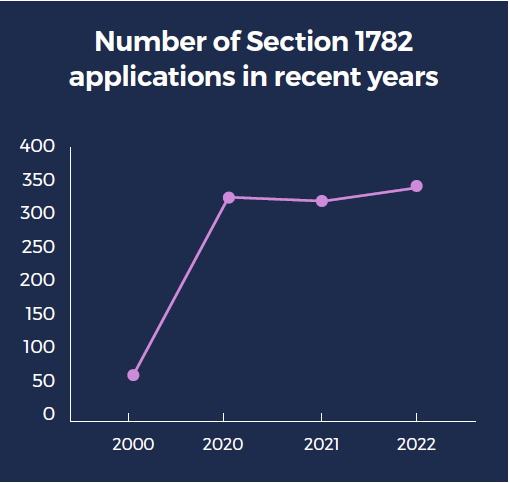‘US-style discovery’ is a phrase that, for some, has no place in international arbitration. It conjures images of invasive depositions, lengthy interrogatories and expensive document review. It is also far from the norm in many international arbitration proceedings, a difference that (at least partially) accounts for international arbitration’s reputation for being more efficient and less expensive than litigation in US courts.
Nevertheless, for many years it was possible to obtain US-style discovery for use in some international arbitration proceedings. The hook was section 1782 of Title 28 of the US Code, which permits US federal courts to order discovery for use in a proceeding before a ‘foreign or international tribunal’. The only other requirements are that the discovery target is subject to the US court’s jurisdiction, and that the requesting party is an ‘interested person’ in the foreign or international proceeding (such as a counterparty). Once those statutory criteria are met, the court has discretion to order the requested discovery in whole or in part, subject to a set of guidelines articulated by the US Supreme Court in Intel Corp. v Advanced Micro Devices, Inc., a 2004 case that was (until recently) the Court’s only case about section 1782. Section 1782 discovery is often used as a way to obtain discovery from parties and non-parties to a foreign or international proceeding and has exploded in popularity in recent years.

In 2022, the Supreme Court heard two consolidated cases about section 1782: ZF Automotive US, Inc. v Luxshare, Ltd. and AlixPartners, LLP v Fund for Protection of Investors’ Rights in Foreign States. Both asked whether international arbitration tribunals were ‘foreign or international tribunals’ that were eligible for section 1782 discovery. ZF Automotive concerned a commercial arbitration tribunal under the DIS Rules, while AlixPartners concerned an investment arbitration tribunal under the Russia–Lithuania bilateral investment treaty and the UNCITRAL Rules. Leading up to this case, there was a deep split in the lower US courts as to whether section 1782 discovery was available for commercial arbitration. The picture was clearer in respect of investment arbitrations: the lower US courts agreed that section 1782 discovery was available in that context. Courts often justified this distinction by pointing to the greater government involvement in investment arbitration tribunals, reasoning that those tribunals were therefore closer in nature to foreign courts (which are the archetypal ‘foreign or international tribunal’) – even though investment arbitration tribunals are often functionally indistinguishable from their commercial counterparts.
In June 2022, the Supreme Court issued a consolidated opinion in the two cases. It ruled unanimously that only tribunals that were imbued with governmental authority by one country or by multiple countries qualified for section 1782 discovery. Thus, in ZF Automotive, the Supreme Court held that most (if not all) private commercial arbitration tribunals do not qualify for section 1782 discovery.
The Supreme Court was less clear with respect to investment tribunals, addressed in AlixPartners. While applications for section 1782 discovery in aid of investment arbitrations previously cleared the ‘foreign or international tribunal’ hurdle as a matter of course, lower courts now must ask themselves whether a particular investment tribunal is sufficiently ‘governmental’ to qualify under the Supreme Court’s opinion. The Supreme Court provided very little guidance on how to make this determination, meaning that lower courts will be left to chart a way forward in 2023 and beyond. The lower courts have already started to grapple with this question, but we expect many more decisions on the issue in the coming year.
The Supreme Court’s decision is welcome news for potential targets of section 1782 discovery requests – including US companies with affiliates that are or may be involved in international arbitration proceedings – who no longer need to worry about being on the receiving end of a discovery application in aid of commercial arbitration and have a new tool to defend against applications in aid of investment arbitrations. Those who would have otherwise sought to use section 1782, however – such as non-US parties arbitrating against US companies or their affiliates – should carefully consider their strategy and how they can use the disclosure procedures within their arbitration to assemble the evidence needed for their case.

‘After years of confusion in the lower courts, the Supreme Court’s decision provided welcome clarity for international commercial arbitration. But it remains to be seen whether, in resolving one circuit split, the Supreme Court has lain the foundation for another split over section 1782 in investment arbitration.’
Paige von Mehren, Senior Associate




